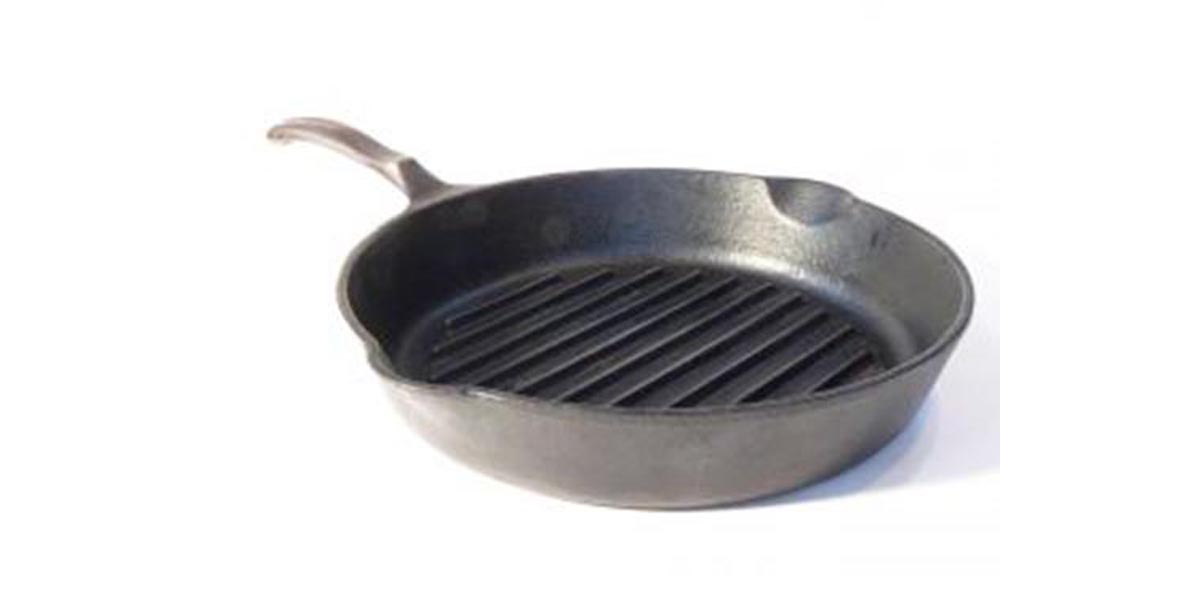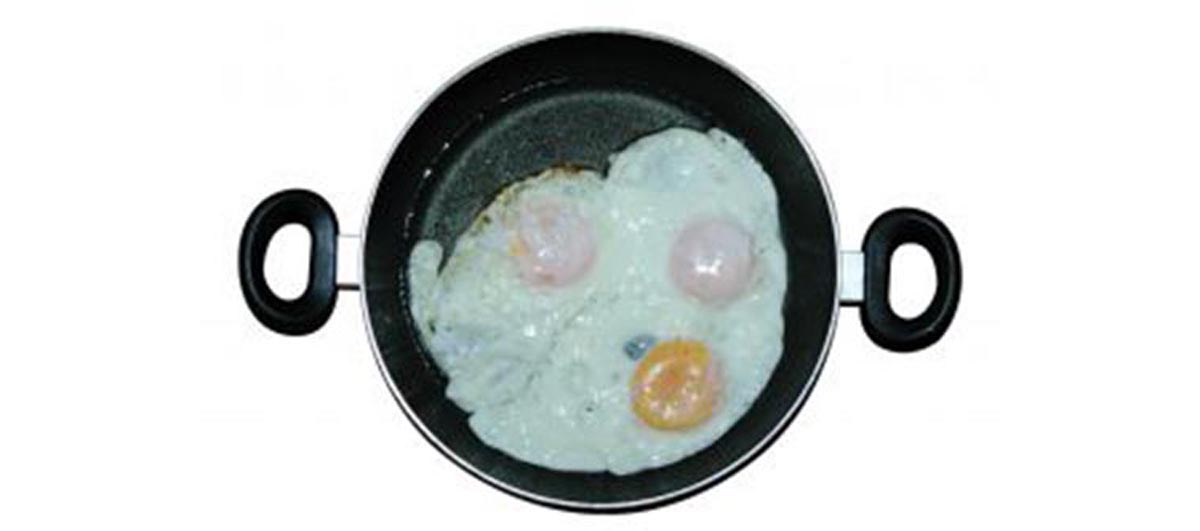
The space agency NASA has made use of the polymer polytetrafluoroethylene (PTFE) — commonly known as TEFLON — for its heat shields, space suits, and cargo hold liners in its space programs. PTFE was used because it is non-reactive due to its strong carbon–fluorine bonds; TEFLON reduces friction and energy consumption of machinery when used as a lubricant.
With that reputation, it is hardly a surprise that TEFLON is also often used in containers and pipe work that harbor reactive and corrosive chemicals. The material is also employed in a wide variety of other fields including the medical and dental industries, in electronics and in industrial work.
So why are we talking about this on SteadyHealth? What is the worry if TEFLON is being used in space programs and pipe work manufacturing?
Apart from being used in the above mentioned applications, the most extensive use of TEFLON is — as you will well know given that these pans are used in almost every household — in non-stick frying pans.
Though it was claimed to be among the best-known and best chemical inventions of the 20th century, today, TEFLON has also been exposed as a serious health hazard to humans as well as animals.
One individual who was born with only one nostril and various facial defects decided to sue the company that manufactures TEFLON, claiming that the chemicals present in this material caused his birth defects.
Avian veterinarians also claim that when Teflon reaches high temperatures, this substance will emit gases that kill bird pets and other birds. In a shocking revelation, a person who claimed to use a Teflon-lined Amana oven to bake biscuits at 325°F reported that all his baby parrots died. In another instance, 14 birds were reported dead within 15 minutes of using a Teflon-coated drip that was preheated in preparation for Thanksgiving dinner.
How does Teflon affect the environment?
TEFLON has been shown to have the capacity to reach high temperatures of about 721 degrees in just 5 minutes. When it does, no less than six different gases are emitted which includes two carcinogens, two global pollutants, and MFA which is lethal to humans even at lower doses. In addition, Perfluorooctanoic acid (PFOA), a form of ammonium salt which is used as surfactant in the emulsion polymerization of PTFE, has been termed as a likely carcinogen by the Environmental Protection Agency’s (EPA) scientific advisory board.What one has to understand is that Teflon toxicosis (as in cases of birds) and polymer fume fever (as in case of humans) may end up being lethal by causing hemorrhage to the lungs, which causes the lungs to fill with fluid — thus leading to suffocation.
Though Teflon has already been shown to be extremely dangerous to workers who are the victims of direct exposure to the toxic chemicals during the manufacturing process over periods of many years, the widespread use of TEFLON also tends to affect the general population indirectly too.
Communities who depend on water supplies that may be contaminated by Teflon manufacturing chemicals are also at high risk of toxicity, for example.
 So imagine all these toxic products being released into the atmosphere every time you fry an egg or decide to cook some fries! Are TEFLON pans really safe to use? Many have questioned this.
So imagine all these toxic products being released into the atmosphere every time you fry an egg or decide to cook some fries! Are TEFLON pans really safe to use? Many have questioned this.
What are the health hazards associated with the use of TEFLON frying pans?
a) Male Infertility - The chemicals emitted from the heating of Teflon pans have recently been shown to be linked with higher rates of infertility. A Danish study suggested that exposure to PFOAs in fetal or later life accounted for decreased sperm production and morphologically abnormal sperm, which decreases male fertility.
b) Thyroid disease - One study, published in the peer-reviewed journal Environmental Health Perspectives (EHP), went on to confirm the association between thyroid disease and human exposure to perfluorooctanoic acid (PFOA). Also, the National Health and Nutrition Examination Survey (NHANES) revealed that higher concentrations of PFOA in the blood of the surveyed people were linked to the occurrence of thyroid disease.
c) Childbirth complications, reproductive problems, and possible female infertility - PFOA contamination of food, air and water supply has the potential to damage the reproductive systems of a large population of women, with the risk of causing difficulty in childbirth or birth defects. Scientists based at the University of California-Los Angeles, found that women with higher concentrations of PFOA in the blood stream (more than 3.9 ppb) experienced greater difficulty in conceiving than those with lesser PFOA concentrations. Also the chances of them being diagnosed with infertility were found to be greater.
d) Birth Defects – an individual living near the DuPont factory that produces Teflon products was born with one nostril and other facial defects. He claims that his mother who was working in the factory was exposed to PFOA while pregnant therefore he acquired those birth defects.
e) Kills bird – when Teflon is heated to a high temperatures toxic fumes are emitted that are known to kill pet birds especially small birds such as budgies, finches, and cockatiels. Considering this the Consumer Product Safety Commission (CPSC) states that cookware and heated appliances comprising of non-stick coatings must carry a label that warns the hazard caused by the coating to pet birds.
f) Carcinogenic – a recent study showed that when rats were injected with PFOA they developed brain tumors. PFOA the coating material used in Teflon products was also shown to be present in trace amounts in blood samples of people and lasted four years in the blood stream.
g) Causes other diseases – animal research has shown that liver cancer has propelled with more exposure to PFOA’s and case reports suggest that the PFE fumes emitted by very hot Teflon coated utensils have caused pneumonia and inflammation in the lungs.
h) Non Biodegradable – PTFE is non-biodegradable as it is made up of strong molecular bonds that make it durable and resistant to natural processes of degradation. Thus it tends to accumulate in the food chain, potentially causing severe damage.
How to avoid these circumstances?
Read More: Teflon Component Linked To 40 Percent Higher Risk Of Arthritis
The toxicity of Teflon is mainly associated with very high temperatures, above 400 or 500 degrees, and one has to keep in mind that Teflon pans heat very easily. Therefore, it is feasible to use these pans at lower temperatures to reduce the potential health risks associated with TEFLON frying pans.
Other alternatives to Teflon are, when it comes to frying pans, the use of stainless steel pans, ceramic pans, and cast iron pans, which are safer to use, equally user-friendly, and even often more durable. It is therefore advisable to eat more raw and whole foods and when cooking on a non stick pan try not exceeding 400 to 500 degrees. It is not only better for your well-being, but for your future generations as well.
- "Nonstick pans: Nonstick coating risks". Consumer Reports.
- Lau C, Anitole K, Hodes C, Lai D, Pfahles-Hutchens A, Seed J (October 2007). "Perfluoroalkyl acids: a review of monitoring and toxicological findings

